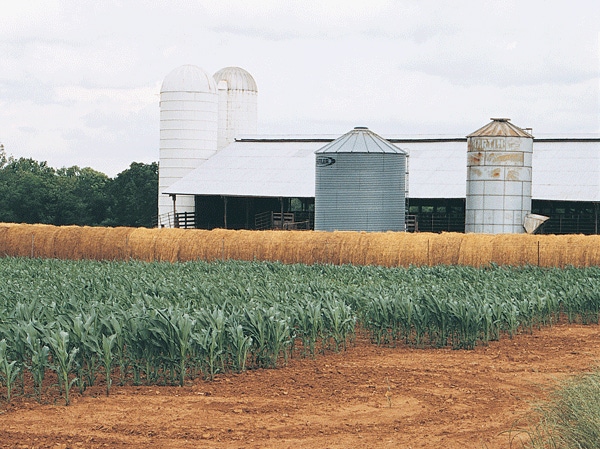
• In a statement to USDA's Farm Service Agency (FSA), the NGFA urged the agency to alter its CRP interim final rule to remove a provision that would exclude land enrolled under the program's continuous signup provisions when calculating the 25 percent acreage limit that generally applies to total CRP enrollments in individual counties.• Under the CRP, landowners enter into 10- to 15-year contracts to plant long-term cover on cropland in exchange for annual rental payments and a payment of up to 50 percent of the cost of establishing conservation practices.
October 8, 2010

The National Grain and Feed Association (NGFA) has urged the U.S. Department of Agriculture (USDA) to avoid idling excessive quantities of farmland in individual counties under the Conservation Reserve Program (CRP).
In a statement to USDA's Farm Service Agency (FSA), the NGFA urged the agency to alter its CRP interim final rule to remove a provision that would exclude land enrolled under the program's continuous signup provisions when calculating the 25 percent acreage limit that generally applies to total CRP enrollments in individual counties. "Some of the most detrimental impacts of the CRP occur in counties that exceed the 25 percent cap," said the NGFA, noting the damage that excessive idling of productive farmland has on rural development, economic activity and the opportunities provided to young and tenant farmers and ranchers to enter or expand agricultural production.
"Idle land closes the door on economic activity generated by agricultural production. And land idling programs that put the government into direct competition with commercial farmers bidding for land cause more people to lose jobs and encourage a continued population exodus from rural communities."
Under the CRP, landowners enter into 10- to 15-year contracts to plant long-term cover on cropland in exchange for annual rental payments and a payment of up to 50 percent of the cost of establishing conservation practices. USDA recently completed a general sign-up in the CRP, enrolling 4.3 million acres as of Oct. 1 that will bring the CRP about 700,000 acres shy of the 32-million-acre maximum allowed under the 2008 farm law.
Established in 1896, the NGFA is a U.S.-based nonprofit trade association that consists of more than 1,000 grain, feed, processing and grain-related companies comprising more than 6,000 facilities that handle more than 70 percent of U.S. grains and oilseeds. Affiliated with the NGFA are 35 state and regional grain and feed trade associations. The NGFA also has strategic alliances with the North American Export Grain Association and Pet Food Institute.
Supports conservation measures
The NGFA said it supported the important role that strong conservation initiatives play, but encouraged USDA to direct more conservation focus and funding to working lands programs rather than land-idling schemes like the CRP.
"The idling of productive land resources costs jobs, stymies economic growth and has the potential to negatively affect the cost of food and biofuels," the NGFA said. "This is a particularly troubling outcome given the recent economic downturn."
The NGFA said the downsides associated with exceeding the 25 percent county limit on CRP enrollment would be compounded by what it called USDA's under-estimation of the number of tillable acres enrolled in the CRP in some counties, and by heavy concentration of CRP acres within certain areas of a county. "Our concern is that CRP enrollments in some counties already far exceed 25 percent — a situation that only would be exacerbated by excluding continuous signup acres when calculating the 25 percent cap," the NGFA said.
In addition, the NGFA cited concerns over USDA's estimated $77 million cost of interim final rule over 10 years, which could "rob" much-needed financial resources from the Conservation Security Program and other conservation initiatives that "invest more prudently" in facilitating adoption of conservation practices on working farmlands.
However, if USDA retains its current interim final rule's provision disregarding continuous enrollment acres when calculating the 25 percent CRP county limit, the NGFA recommended at a minimum that USDA first determine that exceeding that trigger will not adversely affect the local economy and that farmers and ranchers in such counties would be unable to develop acceptable conservation plans for farming such acres in an environmentally sustainable way.
USDA's interim final rule contains neither of these safeguards, which apply in other instance in which the USDA exceeds the 25 percent county limit on CRP enrollments.
The NGFA's membership encompasses all sectors of the industry, including country, terminal and export elevators; feed and feed ingredient manufacturers; biofuels companies; cash grain and feed merchants; end users of grain and grain products, including processors, flour millers, and livestock and poultry integrators; commodity futures brokers and commission merchants; and allied industries. Canadian and Mexican firms also are NGFA members, and use its Trade Rules and Arbitration System by specific reference in their contracts.
For more on the NGFA, please visit
http://www.ngfa.org/full_story.cfm?id=2370.
You May Also Like



